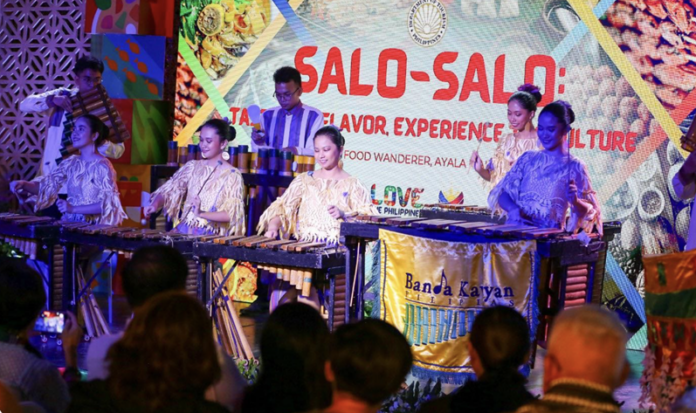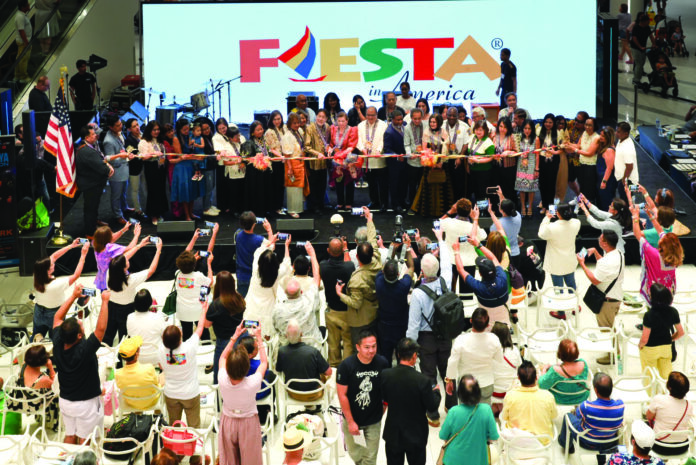
The Department of Tourism (DOT) recently launched a new program that makes experiential travel even more satisfying as it is driven by narratives, traditions, and cultural connections that characterize the production and consumption of food.
The World Tourism Organization (UNWTO) describes this new facet of the tourism industry as a visitor’s experience linked to food and related products and activities while traveling. The World Food Travel Association (WFTA) explains it succinctly as the act of traveling for a taste of a place, to get a sense of a place.
The DOT’s National Tourism Development Plan recognizes the importance of food and gastronomy, as it is an expression of our culture. Our Adobo and our Salo-Salo embody centuries of global influences on our daily lives, showcasing our resourcefulness, hospitality, and ingenuity.

Our incredibly rich variety of ingredients, flavors, and culinary practices displays the sense of place in our cuisine, engaging all our senses—taste, aroma, sight, and touch.
The recent DOT launch featured a very colorful and interesting Salo-Salo at Ayala Malls By The Bay, inviting guests to “taste the flavor and experience the culture” of the Philippines. The gathering was more than just a culinary showcase. It was a tribute to the heart of a rich heritage and the future of food and gastronomy tourism, honoring culinary legacy by focusing on our country’s culinary traditions.
DOT Undersecretary Verna Buensuceso gave an overview of the strategic framework and roadmap for food and gastronomy tourism, followed by a pledge of support and commitment from our country’s tourism stakeholders, who signed a giant-sized replica of the roadmap.

In her keynote speech, Tourism Secretary Christina Garcia Frasco pointed out that “long before tourism routes and runways, before guidebooks and global rankings, there was food shared between neighbors. Family recipes passed on across generations, harvests offered with open arms. This is where our culture lives and thrives.”
She further declared that she wants to “position Filipino culinary culture where it belongs—at the center of national and regional development in the eyes of the world.”

At the launch, guests were guided on a culinary journey featuring several Filipino delicacies displayed at food stations, with descriptions of their origins, ingredients, and how they claimed their place in our gastronomic development as a country. Of course, guests were given the chance to taste everything at each station, which meant only one thing—by the time the culinary tour ended, we felt like we had just finished a sumptuous meal.
An interesting feature of the launch was the inclusion of market (palengke) tourism, a sub-product of this new program, aimed at empowering tourism stakeholders to transform local markets into meaningful and immersive cultural tourism experiences.

In fact, the DOT has developed Market Tourism Product Development Modules—comprehensive training tools designed to equip stakeholders with the necessary skills to organize, develop, and promote local markets as tourism assets.
When I received the invitation to the morning launch, I was surprised to see that guests were advised to come in comfortable clothes and shoes. I knew right away there would be a lot of walking, but when I saw the venue, Ayala Malls By The Bay, I didn’t mind the “warning” because I knew the place was fully air-conditioned.

After visiting all the food stations inside the mall, we were told that the next phase would be a walking tour of the Binondo and Malabon markets, both on the other side of the metro! No wonder comfortable attire was suggested.
I had to skip this part of the event as I had committed to attending a lunchtime meeting. Later, friends who completed the tour of Binondo and Malabon told me they enjoyed themselves, indulging in Chinese delicacies during the Binondo Food Wok and the Pancit and Kakanin during the Malabon Food and Market Crawl. That would have been quite an experience for me, as I’ve never really explored the markets in these areas.
But I can now see that this new DOT program will be another key pillar of our tourism industry, enhancing both local and global appreciation of Philippine gastronomy while promoting local markets as tourism assets. Congratulations, Secretary Frasco, on this successful launch of a program that will certainly redefine our country as a premier food and gastronomy tourism destination in Southeast Asia.
For feedback, I’m at bobzozobrado@gmail.com









